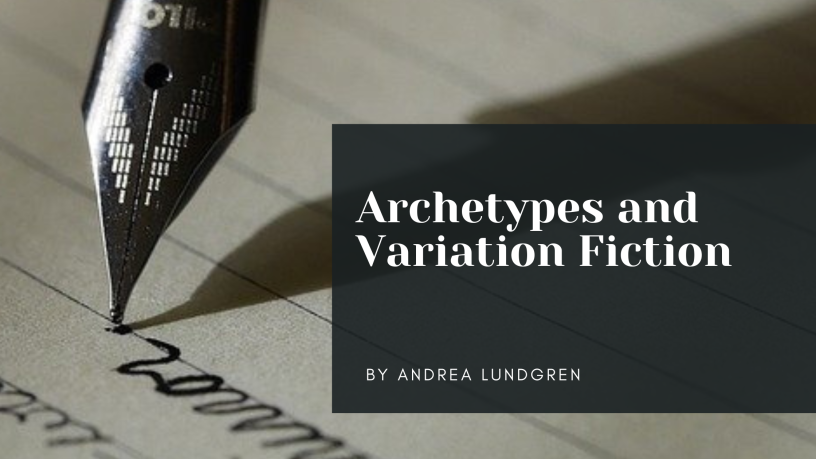In writing, there is generally a push to be original, as there is with most art. To do something new, exciting, and fresh. To break out of the old molds and create a masterpiece.
But I think most of us write a more “collective” version of fiction, where we share a theme, an archetype, a trope, or a plot device with another work. And this isn’t a bad thing. It can actually be a strength. When we admit to being similar to something else, we can actually use what has come before to sharpen our own work.
You see, the trouble with being “new and different” is that such stories don’t always resonate with readers. They may be noteworthy, but they may not mean much to people, in general. They don’t relate to any archetypes (which is a long name for the ordinary human longings which humanity, in general, experiences–to be saved from punishment, to be loved, to have life conquer death, light defeat darkness, etc.).
The old stories lasted and were returned to, over and over again, because they meant something to the people who heard and read them. They play our heartstrings, speaking to us in a deep way, and hitting notes we long to hear. Thus, these stories are considered worth preserving, worth sharing, and worth reading again, even when other, new stories come along.
[Want a second pair of eyes? Check out our proofreading service.]
So here’s a look at some of the common archetypes that appear in fiction (and movies).
- Cinderella story. We’ve all seen these, good and bad, to the point where it has become a cliché, but a Cinderella story is one in which the hero goes from “rags to riches.” Thus, King Arthur (going from the orphan Wart to the recognized king of the realm), Joseph and Moses in Egypt (going from powerless to powerful), and The Little Princess all fit this mold. Even stories like Mansfield Park, where the heroine goes from being unwanted and unappreciated to being valued and loved have a Cinderella aspect. The archetype is there because we all long for things to improve, to get better, for the worst to be the turning point where things start getting better, where what looks like defeat turns into glorious success.
- Savior story. This doesn’t have to be Christian, though Christian fiction often uses this archetype. It occurs where a world (or person) is in trouble and a hero must come, sacrificing greatly to save what is otherwise lost. In this vein, we have stories like Captain America, The Lion, the Witch, and the Wardrobe, Casablanca, and Gweneviere and Lancelot and their sacrifice of their love for the good of Camelot (which didn’t entirely work, probably because the sacrifice was too little, too late). I’d even say that, in some ways, Pride and Prejudice fits this mold because Darcy rescues the Bennett family from complete social ruin and gives up his family pride for the sake of Elizabeth.
- Revenge story. While this isn’t always the happiest of plots, revenge has a long-standing tradition and links with the archetypal longing for justice, for wrongs to be righted. In this respect, many westerns with vigilante justice as part of their plot belongs to this category, as does The Count of Monte Cristo, Hamlet (up until Hamlet returns to Denmark, in my opinion; at that point, he has given justice into the hands of Providence), and one of the plots in The Princess Bride (“Hello. My name is Inigo Montoya. You killed my father. Prepare to die.”) To some degree, I suppose even the Harry Potter series has a touch of this, where Harry is trying to stop the villain who killed his parents.
These are just a sampling of the many archetypes available to writers, but all speak to a desire. We long for justice, for riches/love/beauty, and for salvation from troubles, and thus, plots where these things are addressed and lived out have a deeper quality to them.
And then we have the “almost archetypes:” variation fiction where we repeat a theme, motif, or trope, but we don’t tap into anything deeper. This includes the “hero-in-training” plot, where we spend copious amounts of time on how a gangly, awkward youth becomes a tough, capable fighter. The “transformation romance,” where a less-than-lovely tomboy becomes a dazzling young woman, captivating all the men around them. The “survivor” plot, where it is a battle to the end to see who will live and enjoy great victory and who will get knocked out of the challenge. The “epic battle” plot, where everything builds to a big climactic fight, and the “political intrigue” plot, where you never know who you can trust.
And, while these can be amusing, they don’t always have as much intrinsic power, I think, on their own because they lack archetypal “umph.” They don’t speak to a particular desire so much as tell a particular kind of story, and while they can be sharpened and deepened by including an archetype in them, they often remain a “bare bones” plot, and when you run into it, you say to yourself, “Ah, yes, we’re in for that sort of story.”
Andrea Lundgren enjoys books and all things writing–from how we write to why we write–and her blog explores things from a writer’s point of view.


I agree with this. Those three archetypes have been done numerous times. But if written properly, it’s always a good story to read 💙💙💙💙
LikeLike